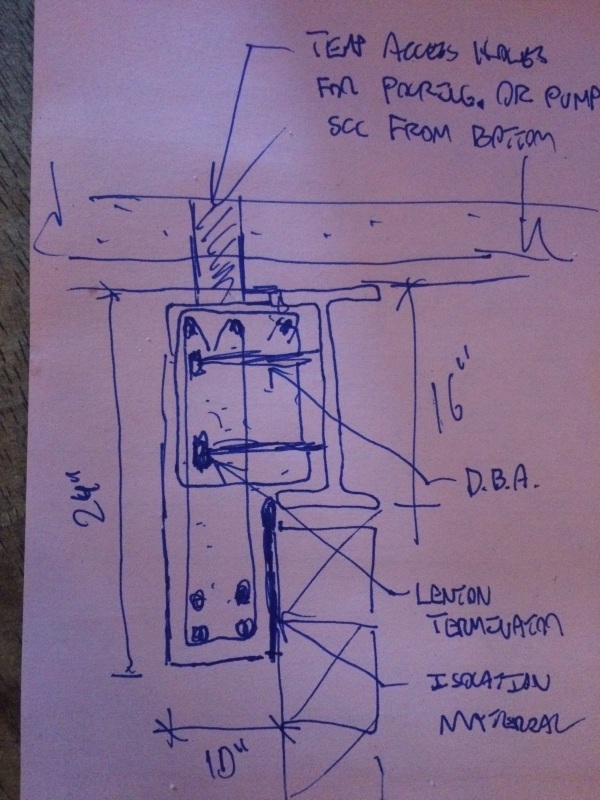ajk1
Structural
- Apr 22, 2011
- 1,791
To strengthen a steel beam that has ready access one side only, I am considering welding in a 35M weldable grade rebar top and bottom, one side of the web only, where the web meets the flange. However that makes it a Class 3 Section, because it is not doubly symmetrical. Can adding lateral braces at close spacing to the compression flange allow the beam to be checked as a Class 2 Section? I am using CSA Standard S16.1.
I know that there are other ways to strengthen the beam, such as welding a tee to the underside, but that requires breaking out the block wall below, spray fireproofing the tee and rebuilding the block wall below.
I know that there are other ways to strengthen the beam, such as welding a tee to the underside, but that requires breaking out the block wall below, spray fireproofing the tee and rebuilding the block wall below.

